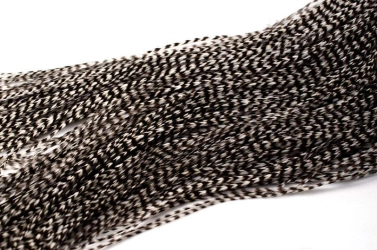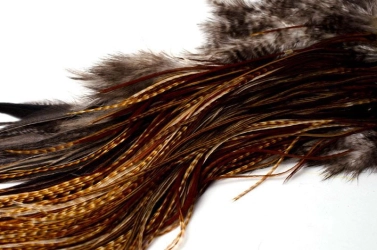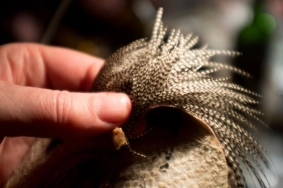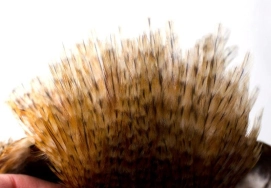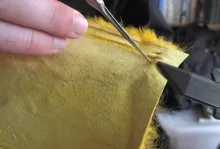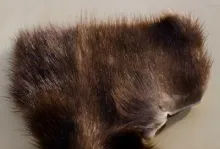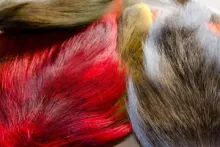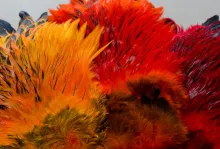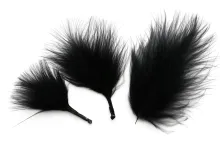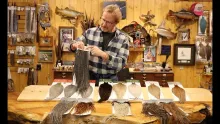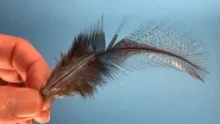Learn what to look for when buying feathers for dry fly hackle. How to choose the right saddles or necks and get the most and the best feathers for your purpose.
When you buy feathers for hackling dry flies, you essentially have two choices: necks or saddles. Necks used to be the thing to go for, but these days genetic hackle has made up for the difference, and oftentimes saddle hackle will actually be a better and more economical choice. You simply get more feather for your money.
If you are looking for the smallest, finest and stiffest hackle, necks might still be your only alternative. The feathers on the very top of the neck, on the backside of the rooster's head can be extremely small and fine, but for the general tyer, who ties dries in the 10-16 and even down to size 20 hook sizes, saddles make very good sense. Even the lower and less expensive grades will give you some excellent feathers for flies, which are not too small. Saddles with feathers for really small flies can be found, but are rare - and expensive.
No matter what, don't buy too big. Too long hackles will do very little good for a fly, while hackle that's a little too small does less harm.
Look for consistent barb length for the hook size you need. Borrow or bring a hackle gauge to measure the barbs, or simply use a hook of the size you plan to tie on.
On necks there's typically a larger variation in size, while the new generation genetic saddle hackle has an amazing consistency in barb length. There is variation, and the shortest barbs are usually found on the edge of the skin.
Look for stiff barbs, which are usually shiny and "glassy", and make sure that you get long feathers with thin, soft stems.
When buying feathers you should always check for growth marks, which appear as thin, translucent bands on the feathers. The barbs are there, but just thinner and with fewer barbules, making the feather appear striped.
Also make sure that you have no broken barbs or feather stems. The bird can have picked its feathers, and simply plucked off parts, or the feathers can be dry and have broken in transportation or storage. Look for molting feathers, which are still in their sheath, a parchment-like tube that protects the feather while it's growing. It sits on the base of the feather until it's fully developed. Skins with many molting feathers mean a lot of wasted material that isn't fully developed, and often useless.
Make sure the feathers are consistent in color and/or pattern unless you are looking for a buggy or mottled appearance. Some odd colored feathers can be both good looking and useful, but if you want cree, badger or grizzly, make sure you have a vast majority of cree, badger or grizzly feathers on the skin.
And last, but not least: Make sure the skin is clean, with as little dirt or grease as possible. An easy way to check how greasy the skin is, is looking at the cardboard that necks and saddles are often packed with. If a large amount of grease has been drawn into the cardboard, there's likely to be much more in the skin.
Make sure feathers are clean and not smelly. You can save some dirty, dusty and dry feathers with a wash, some hair conditioner and steam, but there's a limit. Actually, most feathers apart from the ones from the best manufacturers, do well with some washing when you have brought them home.
If you find full skins in a good quality a little too expensive, some farms sell sets of feathers. Whiting has its 100-packs, which contain a few feathers, but still enough for about 100 flies - hence the name. You can also buy half or quarter skins from some manufacturers or shops and you can of course share with a friend and split a skin - or split two, and get both brown and grizzly without having to buy a whole skin of each.
- Log in to post comments


